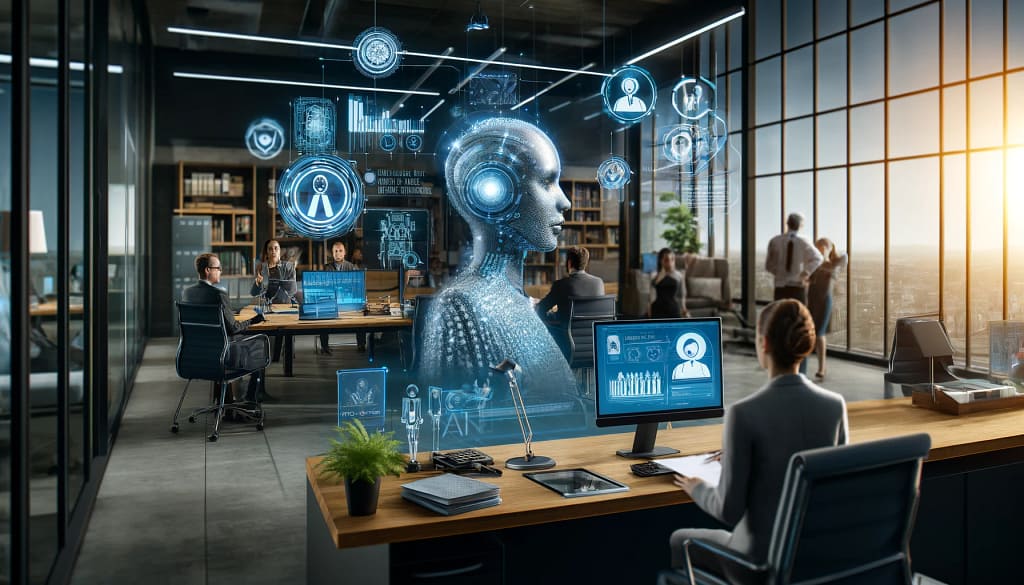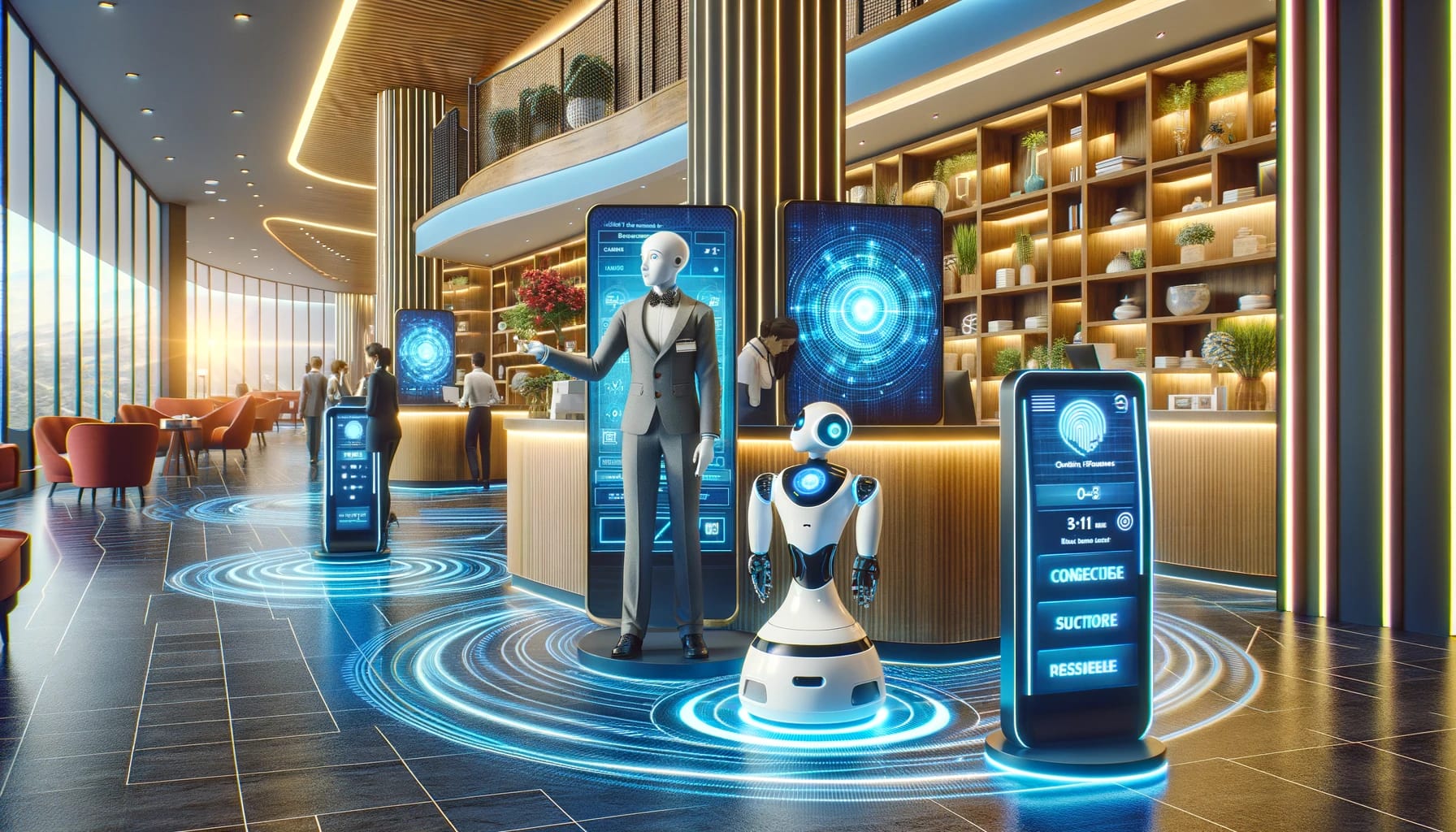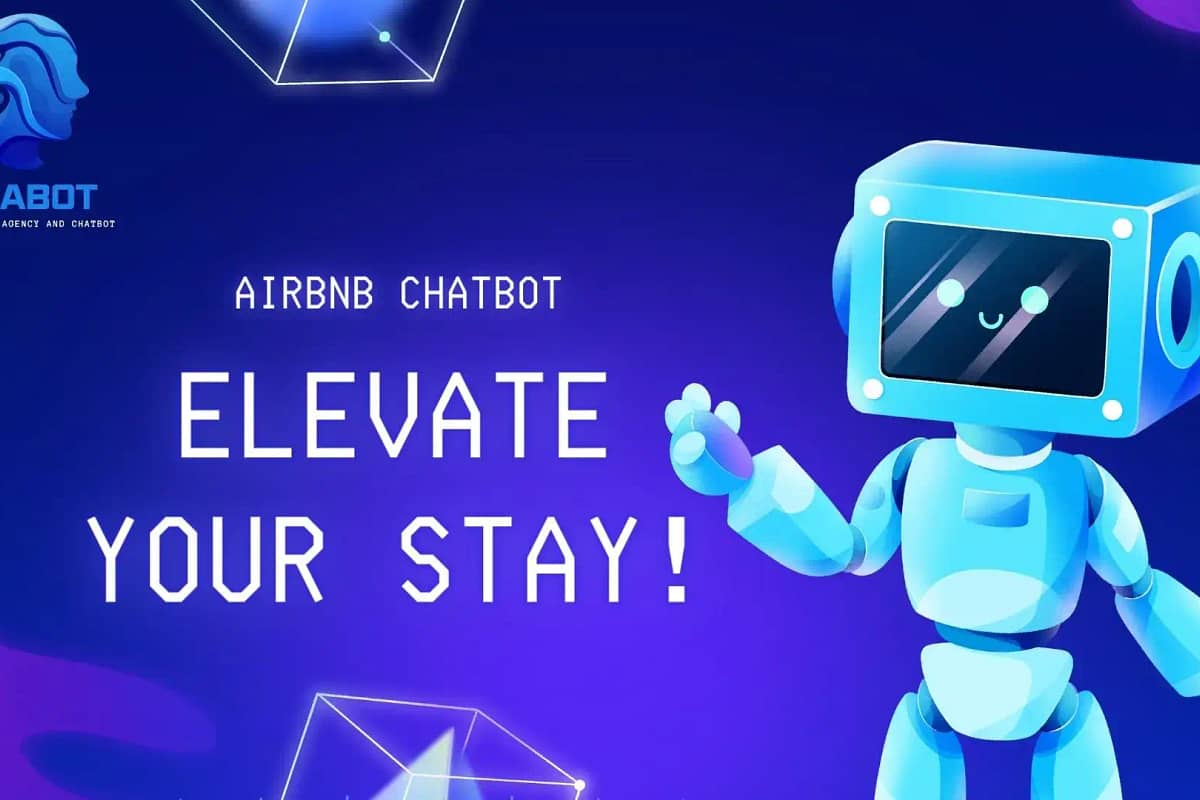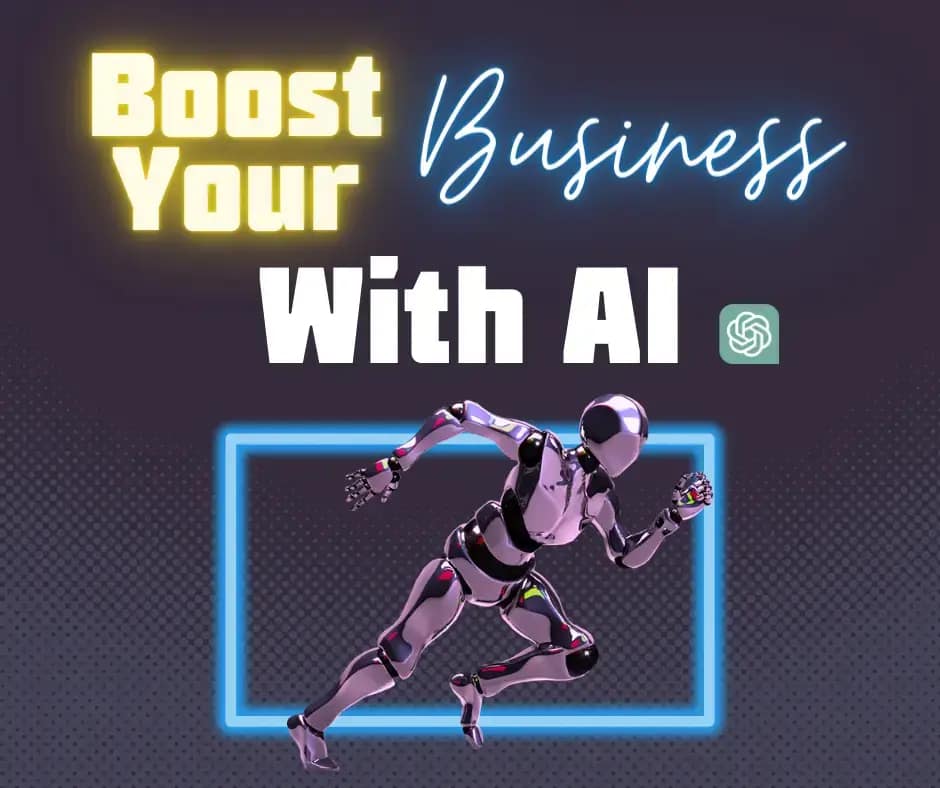Chatbot artificial intelligence is revolutionizing the way businesses interact with their customers. By leveraging advanced AI technology, chatbots can provide instant, personalized responses, streamline customer service processes, and enhance overall user experience. In this article, we’ll explore the latest developments in chatbot AI, its benefits for businesses, and how you can implement this technology to stay ahead in the competitive market.
In the fast-paced digital world, chatbot artificial intelligence, powered by OpenAI and other AI technologies, stands out as a game-changer, transforming how businesses engage with their customers through social media and acting like a chatty butler. Gone are the days of waiting in long queues for customer service; AI chatbots, like a chatty butler powered by OpenAI, offer instant, 24/7 assistance through messaging, making life easier for both companies and customers. However, it’s not just about efficiency.
These smart bots, powered by OpenAI’s new chatbot AI technologies, are getting more intuitive, capable of understanding and responding to complex queries with a surprisingly human touch, enhancing the chat experience. This blend of speed and sophistication in OpenAI’s chatbot technology is reshaping customer expectations and setting new standards in text and web interaction.
Key Takeaways
- AI chatbots, powered by OpenAI, leverage machine learning and natural language processing to understand and respond to customers’ questions, making them a valuable tool for enhancing customer service and engagement, and help.
- Implementing AI chatbots, like those developed by OpenAI, within your business operations can lead to significant improvements in efficiency by automating responses to common inquiries and allowing human agents to focus on more complex tasks. This strategy enables companies to streamline their management of customer questions.
- The key benefits of AI chatbots, such as those developed by OpenAI, include 24/7 availability, instant responses to customer questions in text form, and the ability to handle a large volume of interactions simultaneously, which can significantly enhance the user experience. However, considering the pros and cons is essential.
- Familiarizing yourself with the most frequently asked questions about Chatbot Artificial Intelligence, including those from openai on current events, can help demystify their functionality and potential applications in various industries, including health, and improve access.
- For those new to artificial intelligence, starting with a basic understanding of how AI works, including its integration into chatbots powered by OpenAI, can provide a solid foundation for exploring more advanced concepts and technologies. Understanding how these systems process data, generate content, and respond to questions is essential.
- By integrating AI chatbots, powered by OpenAI, into your customer service strategy, you can not only improve operational efficiency but also gain insights into customer behavior and preferences through data analysis. This integration allows for access to cloud-based data analysis and the capability to handle a wide range of customer questions.
Understanding AI Chatbots
AI vs Rule-based Chatbots
AI chatbots, developed by companies like OpenAI and hosted on the cloud, are advanced computer programs that engage in conversation by answering questions and processing data. They use conversational AI to mimic human interactions. This technology relies heavily on natural language processing (NLP). NLP allows chatbots, like those developed by OpenAI as personal AI, to comprehend and respond to user questions and queries with high accuracy, utilizing data.
Rule-based chatbots, on the other hand, operate on predefined pathways, using data to guide questions towards a specific output. Users must choose questions from given options in the chat window to navigate these conversations for a better chatbot chat experience. This limits flexibility and personalization.
The leap from rule-based systems to openai and cloud AI-driven chatbots marks a significant, free evolution in output. Initially, chatbots, powered by OpenAI’s cloud AI writer, could only offer responses from a fixed set of answers as their output. Now, generative AI chatbots can create new content dynamically. They learn from each chat experience in the chat window, improving their chatbot responses’ output over time.
This shift enhances user experience vastly. Conversational AI, like OpenAI’s chatbot, brings a level of interaction previously unattainable with simple programmed responses, enhancing the chat experience directly within the chat window. It has paved the way for more intuitive and helpful customer service tools, including the use of free chatbot services by OpenAI.
AI chatbots represent a blend of machine learning and linguistic rules, using OpenAI’s free resources. They not only understand text inputs but also interpret the intent behind them, allowing chatbots to use OpenAI’s technology for free. This capability enables them, especially openai chatbot, to provide relevant, context-aware, and free responses.
As technology progresses, the gap between human and machine communication narrows, with free chatbot services by OpenAI playing a significant role. Conversational AI, including free chatbot services by OpenAI, is at the forefront of this transformation, making digital interactions more natural and efficient.
How AI Chatbots Work

Core Mechanisms
OpenAI’s AI chatbots surpass traditional rule-based systems in flexibility and understanding, offering free access to advanced capabilities. They handle complex queries with ease, not limited to predefined responses, as the OpenAI chatbot offers free access. This adaptability in the OpenAI chatbot stems from their advanced algorithms that process user inputs more dynamically and free.
They excel in understanding context and remembering past interactions. This ability, powered by OpenAI, allows for more personalized and free conversations through the chatbot, making the user feel understood on a deeper level. Rule-based chatbots, however, struggle with new or unexpected requests. Their rigid programming limits them to a set of predefined answers, failing to adapt as free AI chatbots from OpenAI do.
Learning and Adaptation
Conversational AI platforms are the backbone of AI chatbots. These free platforms, like OpenAI, enable chatbots to process and understand human language through natural language processing (NLP). NLP breaks down and interprets user input, allowing for more accurate chatbot responses, free of charge by OpenAI.
Large language models (LLMs), like those developed by OpenAI, play a crucial role in training generative AI chatbots. LLMs provide a vast database from which chatbots can learn to generate new, contextually relevant responses. This is key in creating chatbot conversations that feel natural and engaging.
Self-learning mechanisms empower enterprise-grade AI chatbots to evolve from past interactions. They analyze previous conversations to enhance future responses. This continuous improvement cycle ensures that chatbots become more efficient over time, better meeting users’ needs.
Key Benefits of AI Chatbots
Enhanced Customer Interaction
AI chatbots have revolutionized how businesses interact with their customers. Through machine learning, these online chatbots improve with every conversation. They analyze and learn from each interaction, making their chatbot responses more accurate over time. This self-improvement creates a feedback loop that fine-tunes the chatbot’s understanding of user needs.
Moreover, AI chatbots can adapt to various conversational styles and tones. This flexibility ensures a more natural and engaging interaction experience for users with chatbots. Whether it’s through text or voice assistants, chatbots strive to mimic human-like conversations, enhancing the overall customer service quality.
Increased Satisfaction
Conversational AI powers these chatbots to provide immediate support around the clock. Customers no longer need to wait for business hours for assistance; thanks to chatbot artificial intelligence technology, they can get help anytime, anywhere. This 24/7 availability of chatbot across digital platforms significantly boosts customer satisfaction.
Generative AI allows chatbots to automate self-service options effectively. This chatbot automation leads to quicker resolution times for customer inquiries without human intervention. AI chatbots remember user preferences and past interactions. Such personalization ensures that each customer feels valued and understood, further increasing satisfaction levels.
AI Chatbot FAQs

Integration with Tech Stack
AI chatbots bring a revolution in customer interaction. They offer quick, precise chatbot responses that enhance customer engagement and satisfaction. This immediacy, offered by the chatbot, helps in keeping the users engaged and provides them with the answers they need without delay.
They significantly reduce wait times. When a query becomes too complex, chatbots smoothly transition the conversation to a live agent. This ensures that customers receive the help they need without feeling frustrated by long waits or repeated information through chatbot assistance.
Personalized service from AI chatbots increases brand loyalty. Customers appreciate when services are tailored to their needs and preferences. This personal touch can be a key factor in customer retention, making them more likely to return.
Pre-Training Queries
Integrating AI chatbots with existing business systems is straightforward. This ease of integration supports streamlined operations and ensures that businesses can leverage chatbot technology quickly.
Compatibility with CRM systems, e-commerce platforms, chatbot, and other digital tools is crucial. It creates a cohesive user experience across all platforms. Chatbots can access customer data, providing personalized interactions based on past behavior and preferences.
This integration also automates tasks and workflows, including chatbot interactions, boosting operational efficiency. Routine queries are handled by chatbot artificial intelligence, freeing up human agents for more complex issues. This not only speeds up response times but also improves the overall quality of customer service through chatbot integration.
Deep Dive into AI for Beginners
Basics of AI in Chatbots
AI chatbots begin their journey by undergoing pre-training on vast datasets. This foundational step equips chatbot developers with a broad understanding of language and context. It’s akin to giving chatbot a primer on human communication, setting the stage for more specialized learning.
The importance of ongoing training cannot be overstated. By integrating specific industry or company-related information, chatbots evolve. They become more adept at providing tailored responses. This continuous learning process is crucial for refining the interactions between chatbots and users.
Pre-training plays a pivotal role in preparing chatbots to handle a wide array of queries effectively from the start. It ensures that they have a solid base of knowledge before they’re introduced to more nuanced or specialized conversations.
Future of AI Technology
At the heart of AI chatbots lie natural language processing (NLP) and machine learning. These technologies are the engines that power chatbots’ ability to parse user intent and craft appropriate responses. Through NLP, chatbots grasp the nuances of human language, while machine learning enables them to learn from interactions and improve over time.
Setting up an effective AI chatbot involves initial steps like data collection and model selection. These early stages lay the groundwork for creating a chatbot system that not only understands but also anticipates user needs. The marriage of NLP and machine learning within chatbots represents a future where technology seamlessly interfaces with human inquiry, making every interaction more intuitive and efficient.
Final Remarks
AI chatbots are revolutionizing communication, making interactions quicker and smarter. You’ve seen how chatbots work, their benefits, and even tackled some FAQs. This knowledge isn’t just theoretical; it’s a tool that can transform your business or project. AI chatbots offer a bridge between technology and human touch, ensuring your services are accessible 24/7, enhancing customer satisfaction, and streamlining operations. They’re not the future; they’re the now. Embrace chatbots, explore their potential, and watch as they open up new avenues for engagement and efficiency.
Don’t just read about AI chatbots; act on it. Dive deeper into AI, experiment with chatbot platforms, or integrate one into your service lineup. The digital landscape is evolving, and staying ahead means leveraging powerful tools like AI chatbots. Your journey into smarter communication starts today. Are you ready to take the first step?
Chatbot Artificial Intelligence: Frequently Asked Questions
What is an AI Chatbot?
An AI chatbot is a software application that uses artificial intelligence (AI) to understand and respond to users’ queries in a conversational manner. It simulates human conversation through text or voice interactions.
How do AI Chatbots learn?
AI chatbots learn through a process called machine learning, where they analyze large volumes of data and conversations to improve their responses over time. They use this data to better understand user intent and deliver more accurate answers through the chatbot.
What are the key benefits of using AI Chatbots?
The key benefits include 24/7 customer support via chatbot, instant responses to inquiries, reduced operational costs, and personalized user experiences. They help businesses enhance customer satisfaction and engagement.
Can AI Chatbots understand multiple languages?
Yes, many advanced AI chatbots are designed to understand and communicate in multiple languages, making them versatile tools for global customer service.
How secure are AI Chatbots with personal information?
Reputable AI chatbots implement strong data protection measures and comply with privacy laws like GDPR. They use encryption and other security protocols to safeguard personal information.
Are there any industries or businesses, especially those with customer services, that benefit most from AI Chatbots developed by companies like OpenAI?
AI chatbots are versatile but particularly beneficial in industries like retail, healthcare, finance, and customer service. They streamline operations, provide quick answers to FAQs through chatbot, and offer personalized recommendations.
How can I integrate an openai AI Chatbot, designed like a chatty butler with conversation history capabilities, into my business for customer support?
Integration starts by identifying your needs and choosing a chatbot platform that aligns with your business goals. Many platforms offer easy integration into websites, social media channels, and customer service systems without requiring extensive technical knowledge.






